If you like your effects with a heaping side serving of envelopes and modulation, MOTIONS is for you. Triggers and dynamics, texturizers and distortion, filters and panning, and a whole lot of tools for creating shapes and rhythms combine in a semi-modular multi-effects that just won’t sit still. But – that doesn’t mean you can’t use it for precise and subtle effects or skip the over-the-top stuff. Let’s explain.
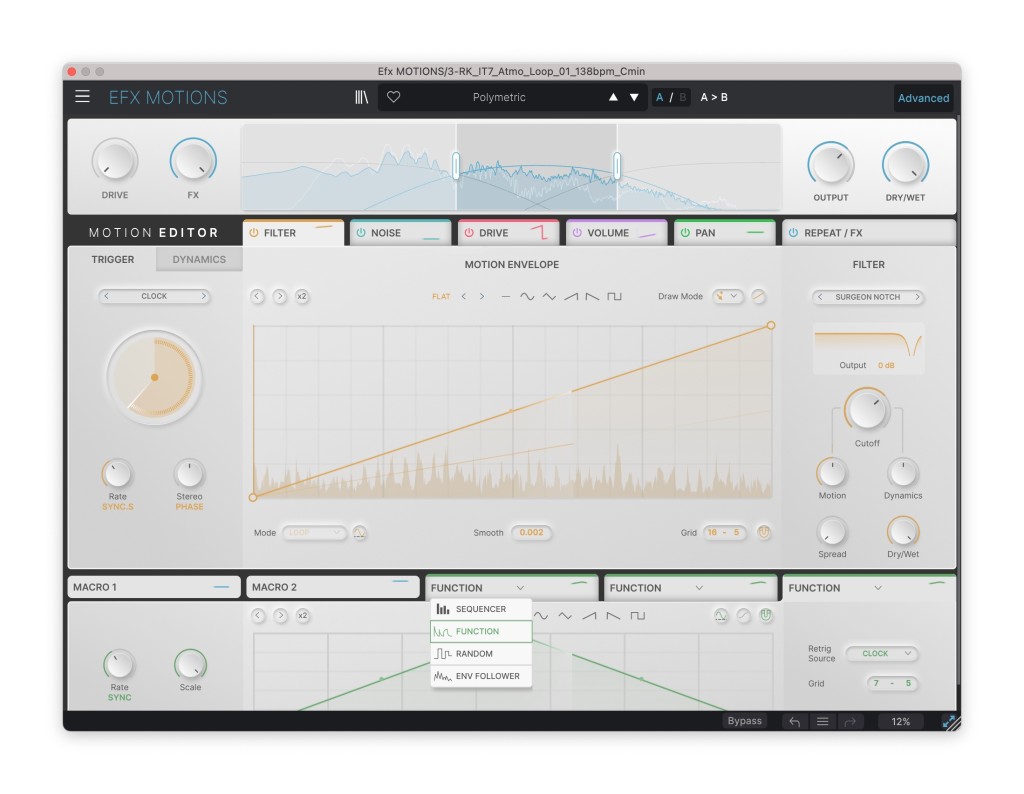
We are in some kind of season of extreme multi-effects. I’m not sure if that’s driven by musical trends — uh, is EDM back? — or just that developers have a ton of ideas they can pack into a plug-in. The downside is that you have the danger of getting an effect without a lot of distinct personality and focus, and a potentially overwhelming interface.
At first glance, you might see MOTIONS that way. It certainly can do extreme effects if you want, and it’s full of presets. But what is appealing is that Arturia has taken many of the bits of their other effects plug-ins and essentially created the “Pigments of multi-effects.” (You also have to wonder if we’re even looking at the effects section of a future version of Pigments – I hope so, on some level.)
I’d encourage starting with the default template before you get completely lost in presets and trying things that way — unless you need a trance gate or something, you may find this gets you closer to your actual music intention. Arturia’s effects library is already deep, but MOTIONS offers a powerful set of modules driven by multiple modulation sources in a musical, approachable way.
Let’s take that step by step. Once you start building sounds, this almost feels more like a big Eurorack rig as much as a software plug-in (except you can see lots of nice UIs and waveforms).
Skip the presets and just get in there and draw. In this season of kitchen-sink multi-effects, there are some great tools for designing complex effects modulation from scratch here. Let’s look:

View the sound and select a band. There’s no multi-band processing in MOTION – that’s not the focus here. But you can choose a particular band to process, with low- and high-frequency cutoff and independent curves for each.
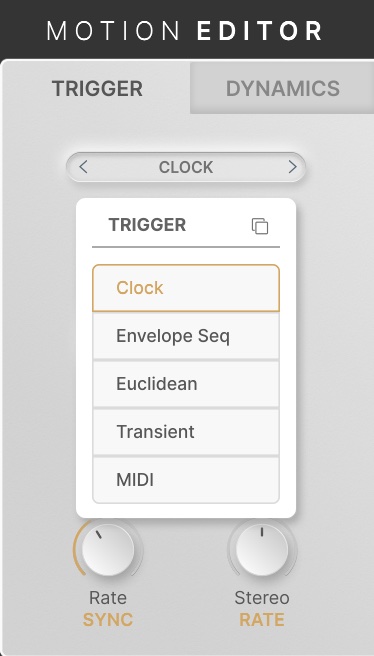
Triggers and dynamics. You can set each of MOTION’s effects modules to its own envelope follower (DYNAMICS) or any number of Triggers. The Triggers can be simple clock sync, a trigger sequencer with gate lengths plus stereo offset plus different clock divs, an input transient detector, or even a Euclidean rhythm generator. You can also use external MIDI input to “play” the module.

You can also sidechain or create ducking effects with the dynamics settings – via an external input, or using internal triggers (for manually ducking without bothering with sidechain routing).
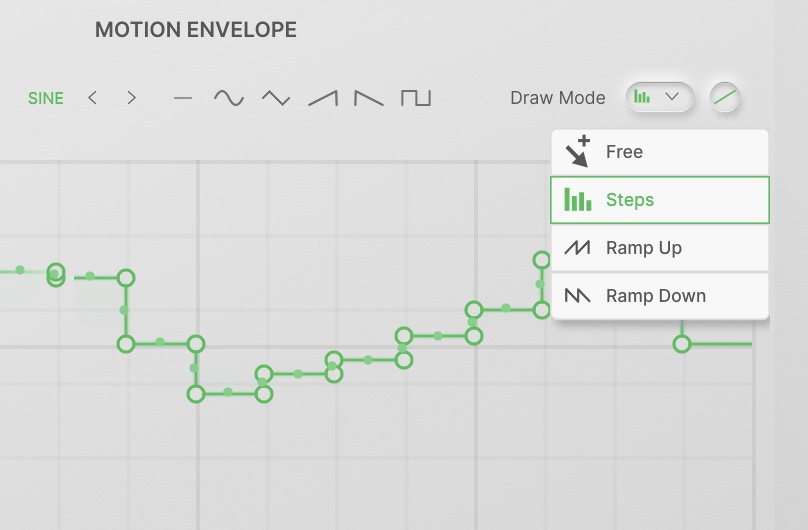
Motion envelopes. Envelope drawing tools have become a staple of a lot of Arturia’s synths – here, you get to apply it freely to effects with loop/one-shot modes, smoothing, and grid settings.
Part of why I think it’s fun to ignore the presets is that building up envelopes is exceptionally easy to do quickly. You have both free and stepped modes, plus various wave shapes. Then open up the envelopes window, and you get still more preset shapes – plus a place to store your own artistic creations.
Multiple modules. There are five core modules – Noise, Distortion, Filter, Volume, and Pan – which you can toggle and drag into any processing order. Each module has a control for Motion and Dynamics amount – meaning you can add subtle (again, subtle, not just extreme!) use of the motion envelope and dynamics followers.
Note that what you don’t get is separate dry/wet controls for each module – Filter and Drive have one, as do the FX in REPEAT/FX in insert mode. I would really have liked that on panning, and I’m not sure why it’s not consistent.
Volume. The simplest of your options, this just applies modulation to amplitude – so it’s useful for stutter, tremolo, and gated effects.
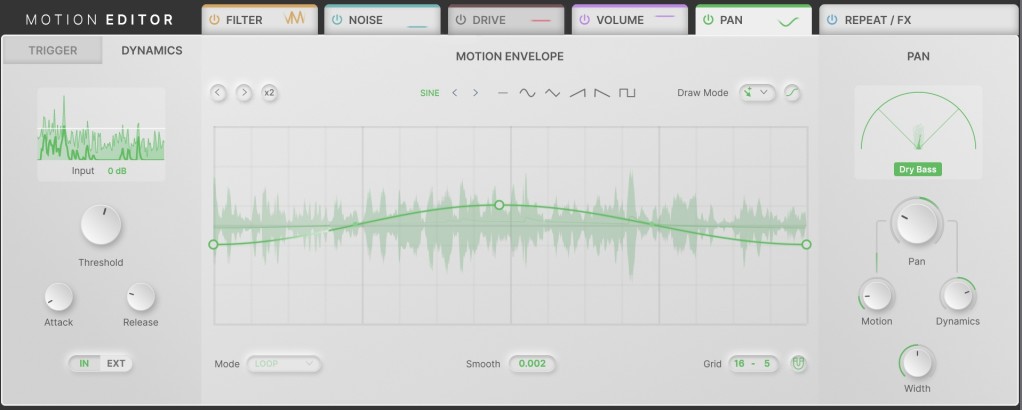
Pan. Also straightforward, this is just stereo pan with a width option – plus a toggle to keep the bass dry. Here’s where I do kind of miss that MOTIONS lacks a mid/side mode, but while the presets are, for me, a little too dizzying, it’s possible to dial things down and add some really nice subtler pan modulation.
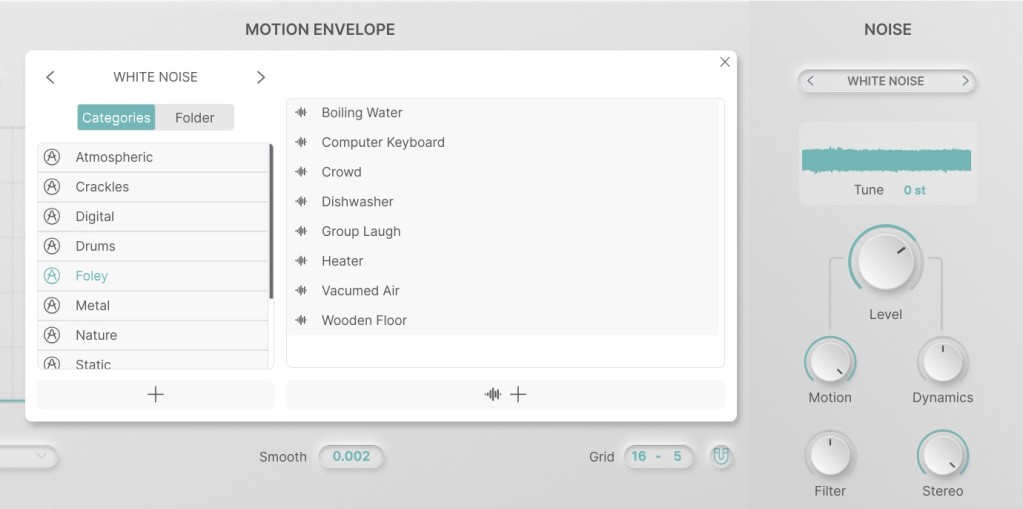
Noise and texture. Noise feels almost like its own plug-in. There’s a huge library of different noise types and textures, plus – thank you – the ability to import your own, which was missing from some recent Arturia effects offerings.
Filter. As with Noise, you get a ton of options here – clean filters, Oberheim SEM, KORG MS-20 MK2, Phaser, and “Sharp”/Surgeon filters, all with various shapes (HP, LP, notch) and curves, plus spread control.

Drive. You know what this means – my ongoing Arturia drinking game. Yes, Germanium – take a shot (ginger shot if you want to stay healthy). Here you get a classic drive (soft clip, hard clip, tape, and asymmetrical modes), wavefolder, and waveshaper (there with a Germanium option).
That does it for movable modules. The last section is always at the end of the signal chain:
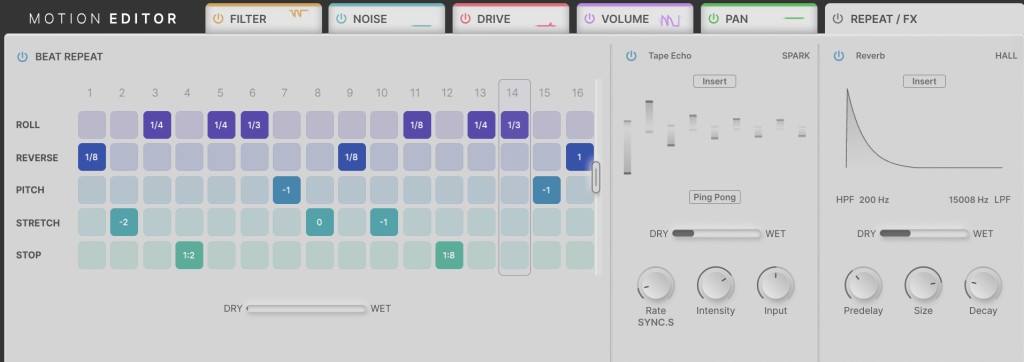
Beat Repeat. Yeah, there’s a Beat Repeat in here, too. It samples/buffers the sound and then plays back with different options and separate lanes for roll (with decay), reverse, pitch (with decay), stretch (with rhythmic / melodic / texture settings to match to your source material), and tape stop.
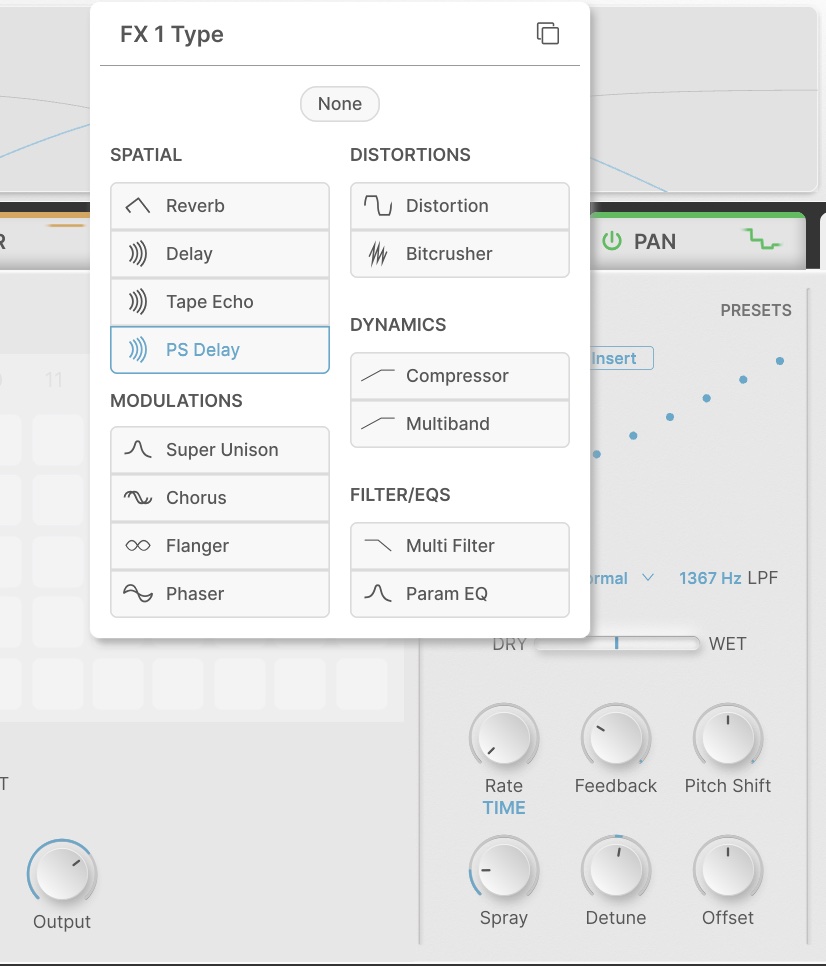
… and two more multi-FX slots. Yeah, then you get two more inserts with swappable order, with an option for each slot for reverb, delay, tape echo, pitch shift delay, super unison, chorus, flanger, phaser, distortion (similar but not identical to the other distortion module – Germanium! drink!), bitcrusher, compressor, multiband, multi filter, and parametric EQ.
These each have their own preset menu, so just in case you’re now several hours into setting up one effect, yeah, you’re allowed!
Advanced. So, for once, you may actually leave the “Advanced” panel alone for a while in an Arturia plug-in because it did get plenty advanced already! But when you do, you have three more assignable modulation slots. Each can be a step sequencer, function generator, random generator, or additional envelope follower. Like I said, this is really like having a complete modular environment.
Conclusions. Even though Arturia already has a lot of effects, this is perhaps the most interesting from a sound design perspective – right up there with Efx FRAGMENTS, their granular processor. Putting these tools into a unified environment like this means you really can focus on shaping whatever you like. Learn the controls and modulation tools once, and it instantly applies to a lot of different effects.
Of course, it’s so modular that you then need to decide when to use this and what it means for some of Arturia’s other effects. I had to look back at Dist COLDFIRE, specifically, because on the surface – they’re both drive/waveshaper multi-effects with envelopes and sequencing. COLDFIRE adds a lot, looking back: for example, you get additional distortion types, parallel/serial processing, and mid/side and band/split options. For just designing distortion effects, I think I’ll probably tend to choose COLDFIRE’s interface and options – though certainly, you don’t really need both.
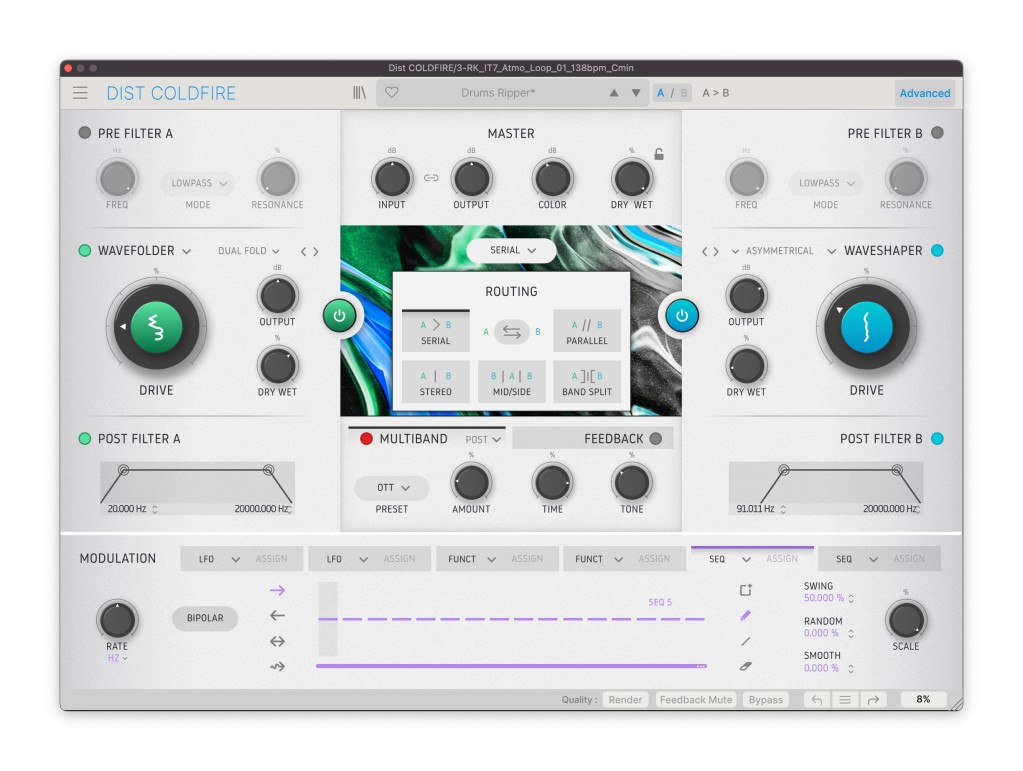
MOTIONS is a terrific package and a great value. It does, though, pose some questions about where Arturia takes this. Rather than reinventing the wheel too much, I hope they add some of those mid/side options or true multiband operation – it seems like they could do that with exactly the same interface paradigm. And I do hope some of the module dragging and sample import migrate to their other tools, too – plus, this stuff would be a killer in their synths. Of all the recent Arturia effects, though, this one looks like a flagship.
And notably, if Baby Audio’s Transit (see my review) felt a little focused on just one dimension – the “let’s make breakdowns” concept – this addresses exactly what I complained about in that plug-in. You can create macros and breakdowns with this, but you aren’t limited to that function. And this also offers the powerful possibilities of a multi-effect without tying those effects to living inside a synth, as Minimal Audio’s Currents does.
MOTIONS isn’t for everyone, and it isn’t for every use case. It’s a lot of effect in there, and sometimes something way simpler and more focused is better creatively. Oh, and, please, Arturia – a dark mode and a high contrast option for your plug-ins! But for its stated purpose of deploying effects shaped by triggers, dynamics, envelopes, and patterns, it’s beautiful.
With any of these tools, I can’t complain. You can very quickly flip a musical idea upside down with one of these effects, perfect for when you’re stuck in a creative rut. And as for tools to go deep with for sound design in some long studio sessions, us folks in the upper northern hemisphere have a nice winter ahead.
Efx MOTIONS @ Arturia
If you buy something from a CDM link, we may earn a commission.
Efx MOTIONS is on sale now from Plugin Boutique